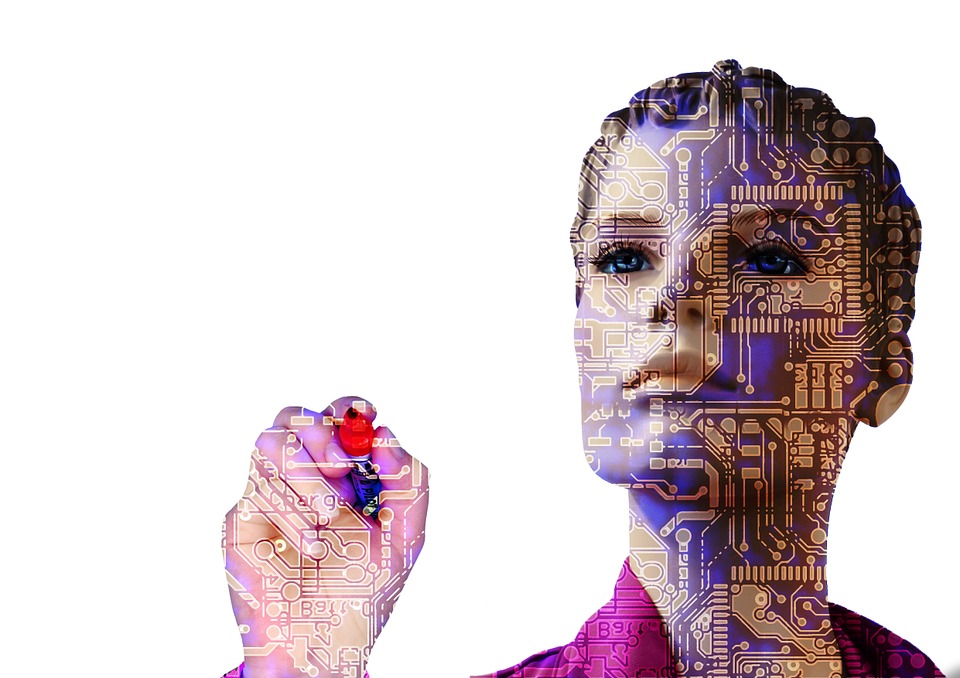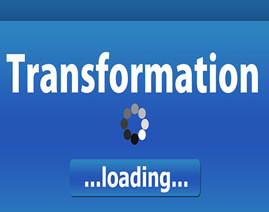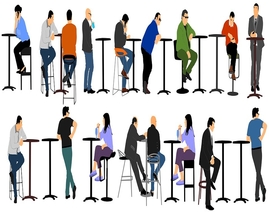Crowdfunding drives unprecedented efficiency
Crowdfunding has become the center of attention in the field of financing. It is also an increasingly popular financing option for both entrepreneurs and investors. However, crowdfunding is actually not a new concept. The foundations of the United States’ iconic Statue of Liberty, for example, was built by cash collected through crowdfunding, which at that time was facilitated by a newspaper.
Nowadays, thanks to the internet, entrepreneurs with big ideas can easily connect with keen investors.
Crowdfunding is an alternative financing channel, in which a number of people contribute to financing a project, debt or donation. In return, these investors are eligible for equity shares in a scheme called equity crowdfunding: free products with reward crowdfunding; and interest, called debt crowdfunding and is popularized by peer-to-peer, or P2P lending. When investors do not get any return for their investment, the scheme is called charity crowdfunding.
The World Wide Web has been a platform for facilitating collaborations between investors and entrepreneurs, and exponentially driving the growth of crowdfunding. This is one of the stand-out-products in the evolving collaborative economy. The trend emerged in 2003, when ArtistShare launched its reward- based crowdfunding service. Since then, the industry has expanded significantly.
In 2015, the value of crowdfunding was globally estimated at US$34.4 billion - higher than the value of venture capital worldwide, which stood at $30 billion. The former is projected to hit $1 trillion by 2025, according to Switzerland- based market research firm MyPrivateBanking.
The idea of crowdfunding is actually very similar to Indonesia’s concept of gotong royong (mutual cooperation). In the country, crowdfunding began to emerge in 2011 with a platform to raise funds for creative projects.
The 2012 movie Atambua 39° and community movement #SaveMaster, which saved a school in Depok, West Java, from eviction, are some of the prominent projects supported by crowdfunding, collecting Rp 312 million ($23,421) and Rp 137 million, respectively.
The method was also applied to gather Rp 1.3 billion from 3,223 donors to help sick children.
Globally, crowdfunding is used in many sectors. there are around 21,000 active projects across various sectors that benefit from crowdfunding, suggesting that its applicant is widespread.
Crowdfunding Center research shows that around 442 crowdfunding campaigns are launched on a daily basis, collecting $60,000 per hour. In total, there are 162 countries that actively participate in funding activities, with the US getting the largest share.
Out of 20,699 active projects, 11,505 are located in the US, while 2,205 are situated in the United Kingdom and 1,137 are in Canada. With around 30 active projects currently running Indonesia still has much to grow.
Convenience seems to be driving the popularity of this funding scheme. Some argue that crowdfunding removes the intermediary role of middlemen, banks or other financial institutions who charge high lending fees.
However, if crowdfunding is successful thanks to lower fees, then it will not take long for existing players to reduce their fees and apply new technologies in their existing circumstances. In addition, banks are trusted to keep someone’s saving.
Crowdfunding has been so successful because it brings unprecedented efficiency and sophistication. It also introduces a higher degree of credit scoring efficiency that we have not seen before.
Under the current situation, banks lend to individuals through credit cards or unsecured loans which are also the target of P2P lenders. For a bank, the cash funneled to this group of individuals is just a very small part of its overall lending assets, making up between 5 percent and 10 percent, because the majority of their assets are usually dedicated to secured loans.
Banks obviously do not invest largely in credit scoring for this segment. In contrast, a P2P company is fully dependent on its credit scoring model. if the credit scoring model is not good, they have the risk of going bankrupt.
Consequently, this forces them to highly invest in data analytics and continuously improve their credit scoring models for individuals- which is not the case with conventional money lenders at present.
This crowdfunding phenomenon is a natural progression toward market efficiency and therefore, a force to be reckoned with. We will see many new types of players entering the financial sector, and many
existing players will be forced to change their business models in order to compete. Many niche sub-sectors, such as real estate crowdfunding, will also arise.
Regulations will play a key role in determining how quick countries adopt to crowdfunding. Regions like the UK will lead the way and are estimated to set the reference rules for the industry.
Indonesia also has a big potential to boost local crowdfunding services. Players are looking forward to regulations to be issued by the Financial Services Authority (OJK) in the near future.
You May Also Like

Install These Free Security Tools Now!
Have you heard of intrusion detection systems? Also known as IDS, this software is often used to det...

Everything As a Service
Transition from Capex economy to Opex Economy World is in a transition from Macro to Micro. Granula...

IoT in Malaysia – 2019 Predictions
The year 2014 is when Malaysians started to Google the term “IoT” and ever since, the hy...

The business case for 5G
As of 2018 ,33 MNOs have been involved in 5G trials within Asia Pacific, accounting for 44% of 77 tr...

A New Face On Digital Transformation: Engagement Innovation
Whether we believe it or not we are in the fourth industrial revolution – The Digital Revoluti...

Technology & Competitive Data Analysis More Money – More Competition; everyone wins
Technology & Competition – More Money, Better Deal for Consumers & Companies – H...

Anatomy of Fintechs that’s redefining Financial services business models.
On a weekend in 2013 during monsoon I invited my friend and his family for a dinner at my place. It ...

Blockchain Taxation
World has paid a heavy price for trust, transparency, controls and accountability. Globally there i...

Why Is CDR / CDNR So Important?
Addressing the Fundamental Deficiency in Today’s Mainstream Cyber Security Strategies From Det...

CIO Business leadership - shifting from tech to business leadership
CIOs are no longer technocrats, they are business enablers and crucial part of organisation. CIOs sh...

Ideas and Opinions | 5G as an Enabler of Smart Cities
When 5G comes to mind these days, we think of “is this REALLY it?” and “have we re...

Lessons in Machine Learning
More organizations are using machine learning for competitive reasons, but their results are mixed. ...

Digital Indoor System: Critical Infrastructure for Digital Economic Transformation
Digital Indoor System: Critical Infrastructure for Digital Economic Transformation Developme...

The Changing DNA of the CIO CIO as Business Enabler
The idea that the role of the CIO has now gone beyond technology and innovation related issues, and ...

Today's Digital Miners
Today's Digital Miners I guess by now everyone of us who have read an article or two on digital...

Digital Transformation Readiness Test for Banks
Digital Transformation Readiness Test for Banks The questions banks need to try to answer to test ...

What is Machine Learning
What is Machine Learning? According to Tom Mitchell, a professor at Carnegie Mellon University has d...

Transformation of industry verticals through 5G – Focus and Look Indoors
Transformation of industry verticals through 5G – Focus and Look Indoors Now that 5G is...

Humanize Technology - back to the basics of serving human needs, humanly
Humanize Technology - back to the basics of serving human needs, humanly The subjects of Digital Tr...

Creating the foundation for Sustainable Innovation
Creating the foundation for Sustainable Innovation In 2011, Marc Andreessen famously proclaimed tha...

About Tech Data Diversity And Inclusion
About Tech Data Diversity And Inclusion I am excited about attending the Hispanic IT Executive Coun...

Digital Transformation: Customer Centricity & Intimacy
Digital Transformation: Customer Centricity & Intimacy It was inspiring listening to IMD Profess...

Is Industry 5.0 putting humans back in the center
Industry 4.0 focused on the machines. Is Industry 5.0 putting humans back in the center? I was on a...

Importance of IT Resilience
Importance of IT Resilience Disclaimer: The posting written here is solely of my own comment and ...

Implementing a SaaS Solution – The 3 Major Technical Challenges
So when are you planning to implement a SaaS (Software as a Service) solution? Very soon, if not alr...

So you want an #Innovation Hub?
Innovation, Design Thinking, Digital, Disruption, Agile, Transformation - these are new buzz words t...

The Unsung Hero; The Data Scientist
It is quite likely you are wondering ‘what on earth’ am I on - for cooking up such a tit...

How POC projects made me a better Project Manager
How did I get here? Project Management is a tough job. We need to keep a track on budgets, timeline...

How Data and AI can help in COVID-19 crisis
Since the first report of coronavirus (COVID-19) in Wuhan, China, it has spread to at least 100 othe...

Building thriving business partnerships with Open API
Apple and Google recently collaborated to assist in enabling contact tracing and reducing the spread...

The Future of Indoors with Digital Indoor Systems
Digital Transformation, 5G, and COVID-19 have triggered further growth in indoor traffic Digital tr...

Seizing Opportunities in the ICT Sector
The Increased Pace of Digital Transformation Automation, digitalisation, artificial intelligence (A...

CoVID19, Digital, ML
CoVid19 hit us and has now created the “new Normal” in terms WFH, Video conferences, bal...

Do we really need CEOs, CFOs, and CIOs?
Why CMOs and CTOs are all you need to succeed in today's world This is my first article in a se...

Cinématographe by the Lumière Brothers & History of AI
The Lumière brothers, Auguste and Louis, French inventors and the pioneer manufacturers...

Avenues To Expedite The Incorporation Of 5G Into Industry
5G has been launched in Asia Pacific. South Korea, China, the Philippines and other countries have b...

4G/5G Fixed Wireless Access: A Critical Revenue Growth Engine
In studying key success factors of solutions, it can almost always be shown that the underlying conc...

Big Data Machine Learning IoT and PI
In the era of the Internet of Things (IoT), an enormous amount of sensing devices collect and genera...

Asia’s Plan To Leverage 5G Is Missing A Regional Strategy
The day the world’s first commercial 5G services promised a “great leap” is still ...

Learning from #COVID19…Would remote working be the new normal?
Musings of a Technology Evangelist In the past few months, we have all learnt many new terms&hellip...

Principles of Sustainable Cybersecurity
In past few years the annual rate of cybersecurity breaches has almost been doubled, and as a result...

Data Governance a key element for Digital Transformation
For the last few years, corporate environment, used to speak and hear lots of financial/management t...

Seven Traits of a Millennial CEO
With a staff strength and annual turnover in the order of billions and trillions respectively, Chris...








Vishal Tulsian
leads a Bank in Indonesia, Amar Bank
Vishal leads a Bank in Indonesia, Amar Bank, which is reinventing itself as a Digital Bank. He has set the vision of the Bank 'to bring smiles on 200 million faces by 2025', which is to be achieved through financial inclusion.